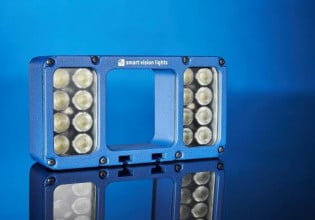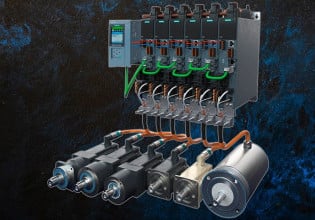Making Process Changes a Snap: Balluff’s Guided Changeover Solution
Balluff’s automated Guided Changeover Solutions seeks to solve a common production challenge: flexible adaptation between processes while maintaining tight QC tolerances.
Ironically, one of the biggest advantages of automated manufacturing is also one of its most major obstacles. Automation was originally designed to take those consistent, predictable workflows and replace human interaction with electromechanical controls. Sequences, steps, and constant dimensions are the keystones of setting up an automated process.
However, manufacturing is turning away from the fixtures and processes with limitless longevity, instead looking into more efficient just-in-time manufacturing along with products customized for specific customers and situations. Switching between 100 batches of slightly varying-sized widgets can be a nightmare for automation.
Balluff’s new Guided Changeover Solution seeks to solve this problem by providing step-by-step instructions and visual cues to keep the process as rapid and simple as possible.

Balluff’s Guided Changeover Solution (GCS) starter kit. Image used courtesy of Balluff
Changeover Solutions
Changing the format of a production system is difficult, no matter how you cut it. There are some solutions that might employ various motion paths on a robot to dispense glue or a weld bead over a different pattern from one batch to another. Or, numerous motion control axes could be integrated to carefully adjust each bracket, pin, sensor, and fixture between batches.
Balluff took a new approach with the Guided Changeover Solution by giving a technician a series of visual steps to follow in order to adjust each required part in the process, verifying the change with an appropriate sensor to ensure that the adjustment will land in a suitable tolerance.
How Does the Guided Changeover Work?
I was able to personally make use of this process in a simple demonstration at the recent Pack Expo Las Vegas trade show. Acting as the end user, I was able to see the process firsthand (although in a simulated environment).
The System Setup
Implementing the guided changeover requires the facility to install appropriate sensors that will monitor every required point of adjustment. Position, distance, load, or other sensors with analog or IO-Link technology are integrated at each point, but it all exists outside the facility network, meaning that no process need be disrupted to integrate the changeover.
Steps Illustrated on a Display
There were three points of adjustment in this demonstration system. One bracket is to be moved along a piece of aluminum extrusion and then tightened. One threaded fixture that requires many turns to adjust to the final position, and the rotation of a sensor bracket to align with a target.
The tablet screen provided an exact visual of the first bracket to be adjusted. The direction of motion was clearly illustrated with a green arrow, and a color gradient indicated the distance remaining. If I moved the bracket too far, the indication arrow would reverse.

Example production line that might require adjustment based on product size, etc. Image used courtesy of Balluff
Sensors to Measure Final Position
As each adjustment was performed, a certain I/O-Link sensor (distance, digital position, and proximity sensors, respectively) ensured that each adjustment was properly performed. In the case of the position indicator, the digital display on the sensor itself showed the correct handwheel rotation direction, to ensure it was not turned in the wrong direction.
Process Verification
As the steps progressed, each would be highlighted green, ensuring that the user understood what steps were required at any time. Finally, as the last adjustment was performed, a green checkmark indicated the completion of the changeover process.
Granted, a real-world changeover process may be far more complicated, but in those situations, the operator is already somewhat familiar with the steps, they only need guidance in the proper order and precise magnitude of each adjustment to ensure high-quality output.
Better OEE Through Rapid Changeovers
Balluff’s Guided Changeover Solution is not a single product, but rather a systematic approach to designing a more effective way to ensure flexibility in any kind of equipment. Brand-new or legacy equipment, from any manufacturer, are all valid solutions when the sensors, indicators, and software are installed completely separate from the central control system. The solution is available as software only (for systems that already have appropriate sensing input) or as a starter kit with the I/O devices and software necessary to implement the solution.
Of course, with modern I/O communication technology, that data can be incorporated into the control system when/if needed. Certainly, if flexibility in manufacturing is the key to ensuring high-quality, high-throughput production, the flexibility of the systems that enable that production, like Balluff’s Guided Changeover Solution, must be cornerstones of automation innovation.





